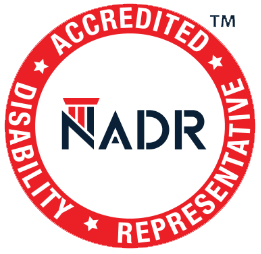Presently, 12.6% of the United States population or nearly 40 million individuals are disabled. Subsequently, in Maryland, 8.6% of residents 21-64 years old are disabled. Many of which are unable to continue steady employment. That’s where disability insurance comes in. Over 2.5 million disability applications are submitted each year. And, although the disability application process can be long and arduous, it is worth the consideration.
Read more →Once you decide to apply for a social security disability case, you will need the support of your doctor to be successful. Your doctor can be a driving force behind your ability to be approved for social security disability. With the addition of your doctor’s assistance and a signed letter, you will have a higher chance of receiving approval for your case.
Read more →After being diagnosed with degenerative disc disease, you may be unable to work. Due to your inability to work, you have the option to apply for Social Security disability benefits. This type of disability insurance is provided to an individual who is disabled or to their dependents based on how long the individual has worked and if enough credit was earned to qualify. To qualify for benefits in this manner, you must have a permanent disability. You are not eligible for payments during the first six months you are not working. With the application process, information from the Social Security Administration determines if you meet the definition of disability as set forth by the administration and if you are eligible for monthly benefits.
Read more →Applicants may be adamant that they cannot work but for specific reasons, the Social Security Administration may feel differently. So, the question is: what are the criteria that SSA officers use to determine whether a person should receive benefits? The information below will help you to understand and identify the factors the SSA uses to determine if an applicant is able to work, or if they can be a recipient of the disability benefits.
Read more →In the Autism Spectrum, there are three disorder types. These disorders include Autism, Pervasive Developmental Disorder (PDD-NOS) and Asperger Syndrome (AS). Each condition is present at birth but it is not unusual for individuals with Asperger Syndrome and Pervasive Developmental Disorder to not be diagnosed until the teen years or adult age. When an individual has been diagnosed, social security disability benefits can be claimed. However, most caregivers are unsure how to file or what to do to earn benefits. Read on to see what you can do to file for disability when your child or loved one has been diagnosed with a form of autism.
Read more →There is a lot of information to take in when you are applying for your social security benefits. If you are receiving Social Security Disability Insurance (SSDI), then you and your family members may qualify for auxiliary benefits. There are some cases that allow the disabled applicants family to receive benefits as well. These are considered auxiliary benefits because the family member is only receiving the benefits because the disabled family member was awarded their benefits.
Read more →Social Security disability is an option for individuals that have become disabled before reaching the age of retirement and are unable to continue working. This option is often referred to as workers disability and will see a monthly payment provided to the individual based on a number of factors. To be able to receive social security disability, you must file a claim. In some cases, the claim is denied. If this is the case, you can file for social security disability reconsideration. Below is a simple guide on how to do so if you find that your original claim is denied.
Read more →Are you currently on disability but want to attempt to reenter the workforce? If so, you will need to learn about the trial work period. The term ‘trial work period’ refers to a grace period of nine months. This is provided by the Social Security Administration (SSA) for any individual who receives disability benefits and wants to go back to work. The individual has a nine-month time frame to conduct the trial work period, each period lasting 60 months.
Read more →The EPE applies if you are receiving disability benefits and have gone back to work after the trial work period. Only to now find yourself not able to work yet again due to your disability. EPE consists of a time frame of 36-months in which you may see SSDI benefits stop and restart. It does not require a new determination of disability by the Social Security Administration to restart your benefits. EPE does not apply to recipients of the SSI program.
Read more →![Disability Application Process by the Numbers [Infographic]](https://www.dssmd.com/wp-content/uploads/2018/01/DSS_Feature_Graphic-570x172_c.png)











